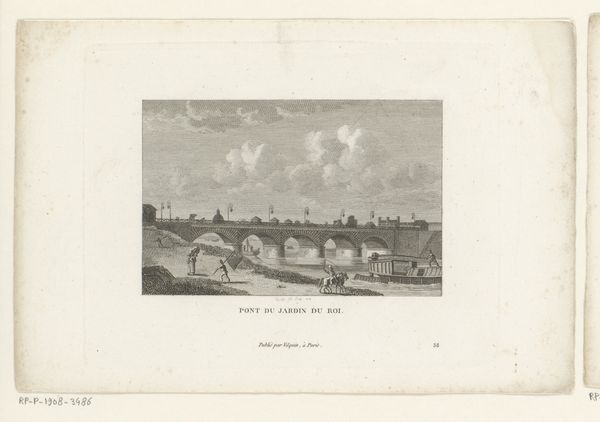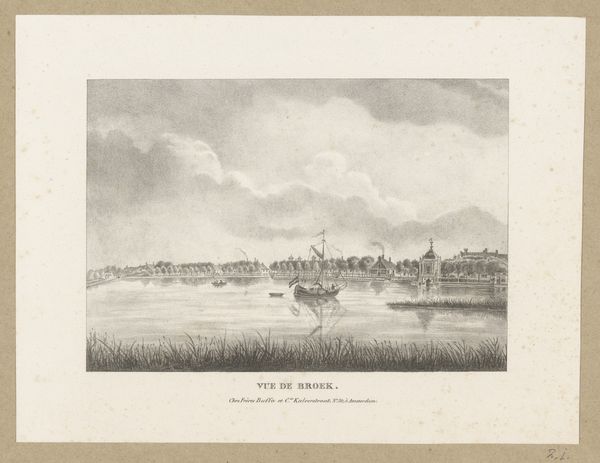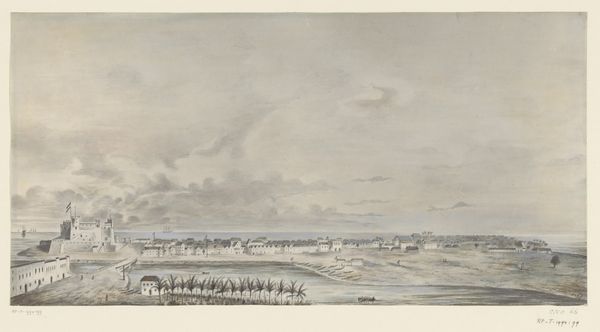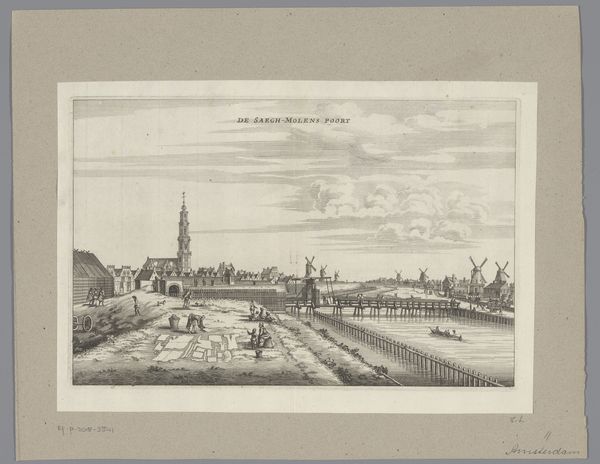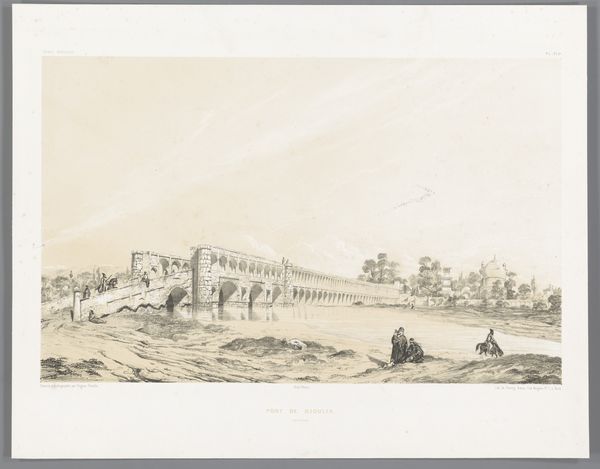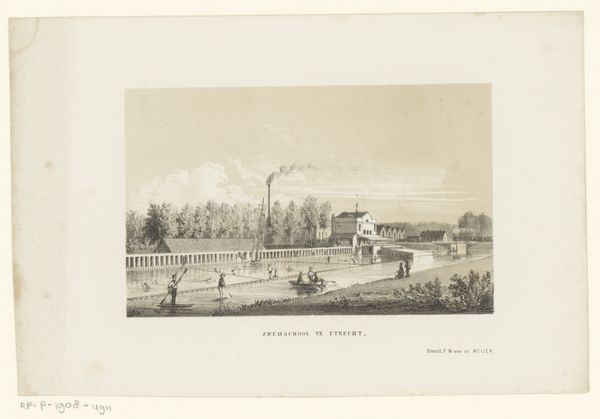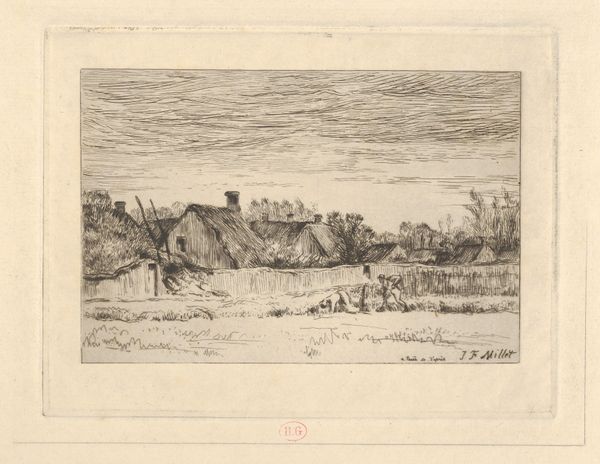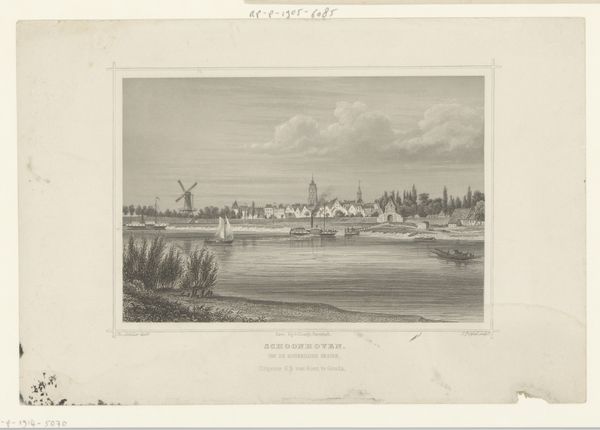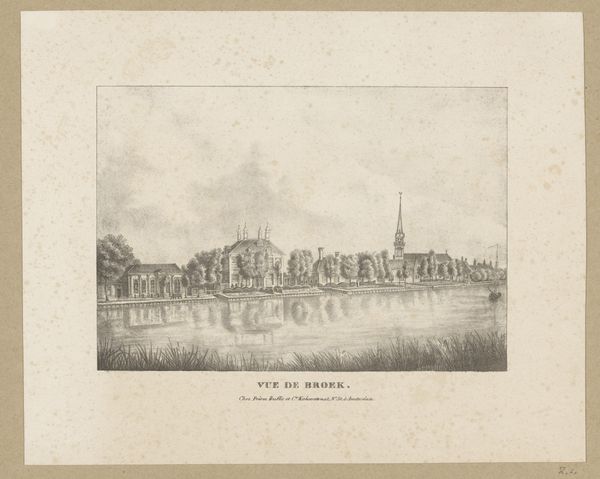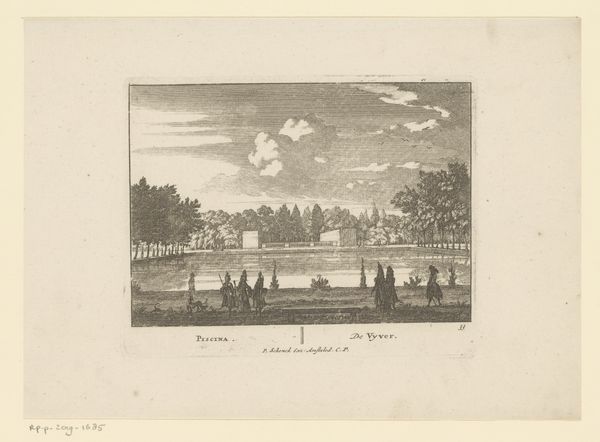
Gezicht op het Valkhof en de Waal ten noordwesten van Nijmegen 1815 - 1824
0:00
0:00
watercolor
#
landscape
#
river
#
etching
#
watercolor
#
romanticism
#
cityscape
#
watercolor
Dimensions: height 315 mm, width 389 mm
Copyright: Rijks Museum: Open Domain
Curator: Ah, a lovely vista. This watercolor and etching on paper is titled "Gezicht op het Valkhof en de Waal ten noordwesten van Nijmegen," or "View of the Valkhof and the Waal northwest of Nijmegen," by Derk Anthony van de Wart, dating from between 1815 and 1824. Editor: It exudes a profound sense of stillness. The muted tones and meticulous lines create a harmonious balance, yet I feel a slight coolness, as if the scene is observed from a detached perspective. Curator: Indeed, that cool detachment could be interpreted within the context of Romanticism. The era placed emphasis on personal emotions and nature, but there was also a burgeoning sense of nationalism and documentation. Artists were visually mapping territories, defining identity through depictions of cities. Editor: It strikes me how Van de Wart has organized the visual elements. The river cuts horizontally, bisecting the scene into distinct registers. And then the architectural forms huddle along the upper bank, creating a sharp diagonal thrust. It almost reads as a study in compositional geometries. Curator: Exactly! Note how the buildings cascade along the hill, seemingly guarding the river. Nijmegen was, and is, of course a significant strategic location historically. These pictorial renderings helped to visualize, understand, and in many ways, solidify power structures. Editor: You mentioned power—it's interesting how the artist uses light. Softly diffused light bathes the river and distant plains. It subtly deemphasizes the human presence and reinforces the sublimity of the natural environment. The almost mathematical recession creates atmospheric depth. Curator: And, of course, one cannot dismiss the technical aspects. Combining watercolor washes with etched lines allows for precision and detail while still imbuing the image with light. It is the marriage of artistic skill with cultural importance. Editor: Thinking about it now, there's more to discover in its precise orchestration. A dance between observation and idealization...a historical document reflecting more than meets the casual eye. Curator: Absolutely, and seeing through that lens helps to decode the layered meanings. A potent reminder of the dynamic relationship between art, place, and society.
Comments
No comments
Be the first to comment and join the conversation on the ultimate creative platform.
